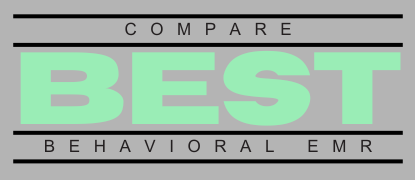
Why Behavioral Health Practices Can’t Afford to Overlook EMR Data Security
Let’s be honest, implementing a behavioral health EMR system is no small feat. Between selecting the right platform, training your team, migrating data, and, oh yeah, continuing to see patients, data security can sometimes feel like an afterthought. But in a world where cyber threats evolve faster than a teenager’s texting slang, overlooking data protection is a risk no clinician should take.
Whether you’re a solo therapist or managing a multi-provider behavioral health practice, safeguarding sensitive patient data isn’t just a HIPAA requirement. It’s a cornerstone of your clients’ trust and your practice’s long-term stability.
So, how do you confidently implement an EMR system while ensuring your data is locked down tighter than your clinical notes during a board audit? Let’s break it down.
Understanding the Stakes: Why EMR Data Security Matters
Behavioral health records often contain deeply personal information, more so than your average medical chart. We’re talking therapy session notes, medication histories, trauma disclosures, substance use details, and more. Imagine the chaos (and lawsuits) if that data got into the wrong hands.
Here’s what’s at stake if EMR data security isn’t handled properly:
– HIPAA violations and hefty fines
– Loss of client trust
– Damaged reputation
– Potential lawsuits
– Disruption to daily operations
Sound dramatic? Maybe. But ask any practice that’s suffered a data breach, and they’ll confirm it’s as painful as missing your morning coffee on a Monday.
Top EMR Data Security Features to Look For
Every behavioral health EMR vendor will claim their platform is “secure,” but what does that even mean? Here’s a checklist of must-have security features:
1. Data Encryption
Your data should be encrypted both at rest (when stored) and in transit (when being sent). Think of it as locking your office door and shredding your notes, digitally.
2. Multi-Factor Authentication (MFA)
MFA requires users to verify their identity in more than one way (e.g., password + phone code). It’s like a bouncer for your EMR; only the authorized get in.
3. Role-Based Access Controls
Not everyone on your team needs access to everything. Your front desk doesn’t need to see session notes, right? This feature limits access based on job roles.
4. Audit Logs and Activity Monitoring
You should be able to see who accessed what and when. Think of it as a security camera for your digital records.
5. Regular Backups
If the worst happens, like a ransomware attack or system crash, you want your data backed up and recoverable. Daily backups are ideal.
Common EMR Data Security Pitfalls Behavioral Health Practices Face
Even with the best EMR platform, human error can throw a wrench in your security plan. Here are a few avoidable missteps:
– Using weak passwords (yes, “therapy123” is not secure)
– Sharing login credentials among staff
– Skipping software updates (those patches fix security holes)
– Failing to train staff on HIPAA and data privacy
– Not vetting cloud vendors or assuming “cloud” automatically means safe
Choosing a Secure Behavioral Health EMR Platform
There are plenty of behavioral health EMR platforms out there, Opus, SimplePractice, TherapyNotes, and others, all with varying levels of security and features. When evaluating options, don’t just focus on scheduling tools or note templates. Ask the hard-hitting questions:
– Is your platform HIPAA-compliant and how is that demonstrated?
– What encryption protocols do you use?
– How do you handle data backup and disaster recovery?
– Can I restrict access by role?
– Do you offer security training for my team?
A solid vendor won’t just answer these questions; they’ll offer documentation and walk you through their security protocols. For example, Opus includes built-in audit logs and MFA by default, while other platforms might make that optional or add-on.
Evaluate Your Current Setup: Are You Really Protected?
Already using an EHR or cobbling together a few different tools (Google Drive, spreadsheets, sticky notes)? Now is a great time to evaluate how your current system stacks up against security standards.
Not sure where to start? Our free practice analysis can help you assess your data security readiness and identify vulnerabilities before they become liabilities.
Best Practices to Keep Your Behavioral Health EMR Secure
Regardless of which EMR platform you use, follow these best practices to maintain a secure environment:
– Update passwords every 90 days
– Train staff annually on HIPAA and data handling
– Enable MFA for all users
– Regularly audit access logs
– Back up data to a secure, off-site location
– Use secure Wi-Fi networks (yes, that café Wi-Fi is a no-go)
Pro Tip:
Treat data security like hand hygiene in a hospital, simple, routine, and essential.
Final Thoughts: Protecting Your Clients Starts with Protecting Their Data
Implementing a behavioral health EMR is one of the smartest moves you can make for your practice, but only if you do it securely. With the right tools, protocols, and vendor support, you can confidently digitize your operations without compromising client confidentiality.
Not sure if your current setup is up to par? Don’t wait for a breach to find out. Use our free practice analysis to evaluate your security posture and get personalized recommendations tailored to your needs.
Because when it comes to EMR data security, proactive beats reactive; every time.
Sources:
HIPAA Security Rule
National Library of Medicine: Cybersecurity in Healthcare
HealthIT.gov Privacy & Security
